Game Cycles, Focus Actions & Development
2021. July 29.
In last week’s spotlight, the designers took a closer look at the Sector tiles, the basic building blocks of the Voidfall universe, populated them with infrastructure, and got the resource production going. Today, it’s time to talk a bit about the building blocks of the game flow: the Cycles!
GAME CYCLES
Both the competitive and cooperative games consist of 3 Cycles. Each Cycle spans years of expansion, research, politics, and massive fleet maneuvers in the epic struggle against the Voidborn. They consist of three sub-phases: Preparation, Focus and Evaluation. Today, we will cover the first two, while Evaluation will come up in later Spotlights.
The Preparation phase is all about setting the stage for the upcoming Cycle. It’s a quick process that’s helped immensely by the UI of the Galactic Board, Voidfall’s only central game board beside the hex map. The two steps we’d like to cover in this spotlight are Resolve Priority Cards and Galactic Event.
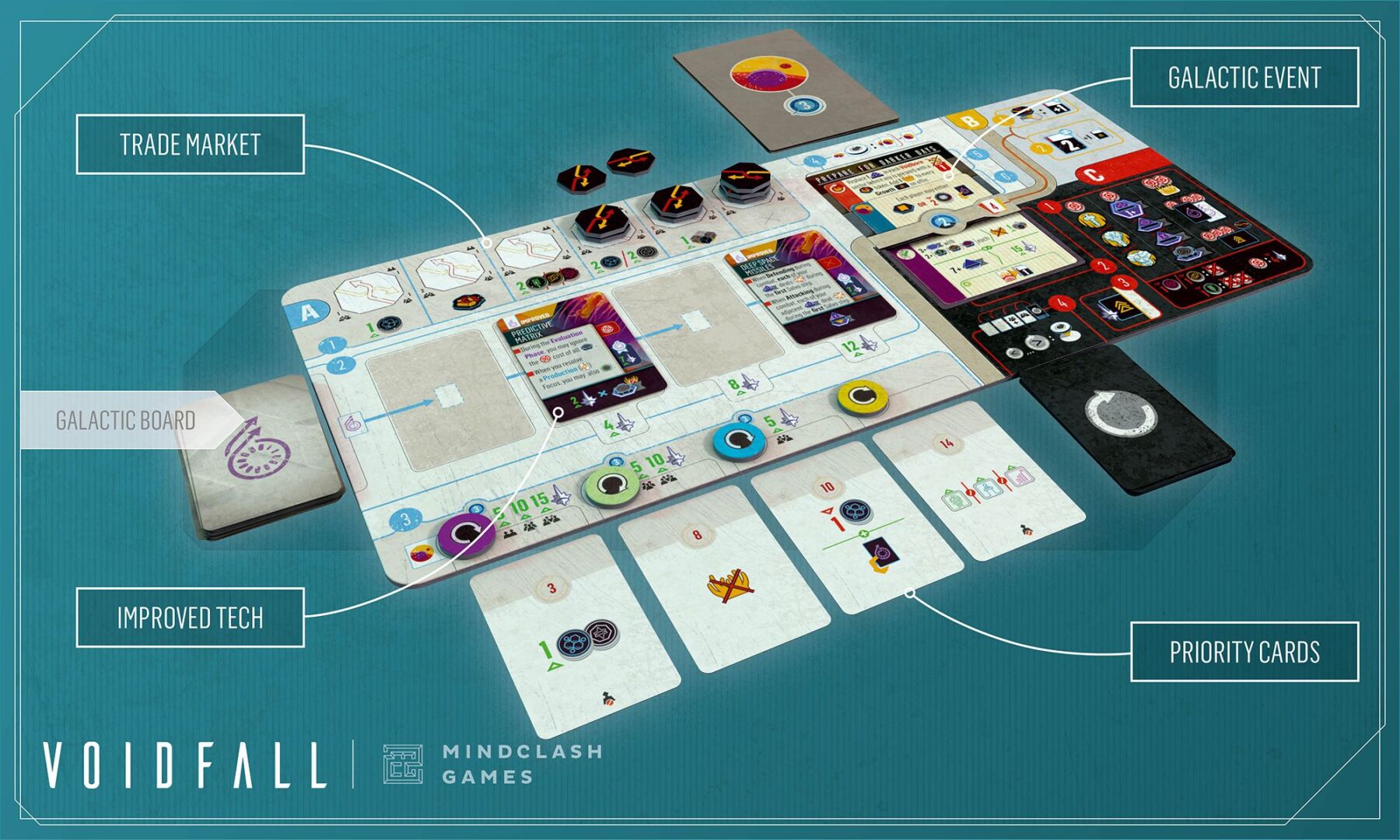
Priority cards are picked during Setup or at the end of the previous Evaluation Phase, and players reap their bonuses at the start of each Cycle. Each of these cards has a number on it: lower ones will go earlier in turn order, being able to grab scarce valuables (like the Techs you’ll hear about in the next design spotlight). However, higher numbered Priority cards have much better instant rewards, often being well worth giving up the tactical advantage of going early. The player with the lowest number even gets to shape galactic history by picking the Galactic Event that will affect the Cycle out of two possible choices.
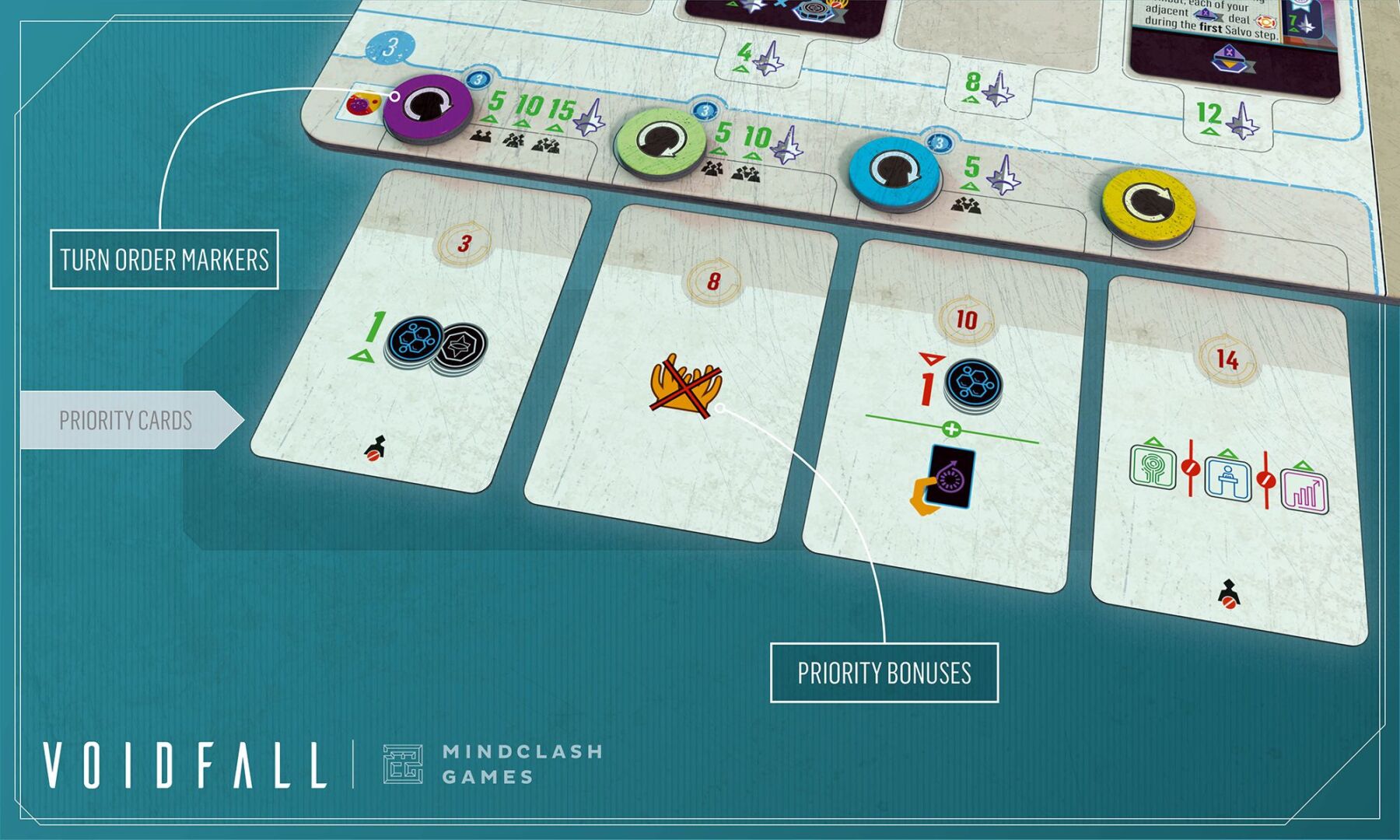
The Galactic Event card actually represents far more than a simple event - it shows how the Voidborn’s threat unfolds (both mechanically and thematically), how the galaxy reacts, and sets temporary goals accordingly for the Cycle. It also tells the players how many Focus cards can be played this Cycle, which, as you will understand soon, can be a very impactful variable.
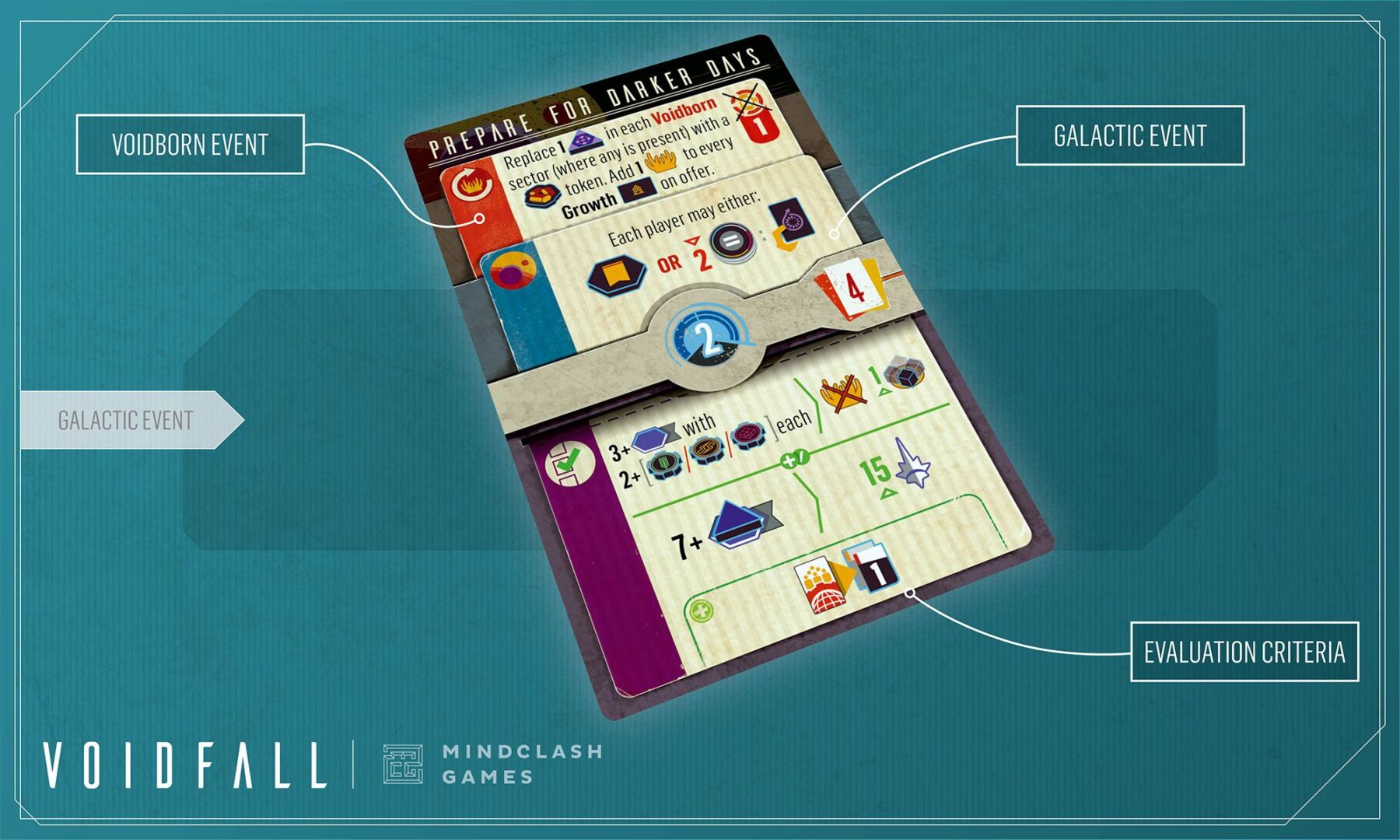
FOCUS CARDS AND ACTIONS
After the Preparation phase, we have the Focus phase, the heart and soul of Voidfall. This is when players take turns playing their Focus cards. As you may have noticed, Voidfall’s space and time scope is immense: a Focus card represents the general direction you’re steering your empire towards over the course of a few years that an ingame player turn encompasses.
You have 9 Focus cards - 10 if playing cooperatively - each with 3 unique actions. You can only play each Focus card once per Cycle, and once played, it stays in your discard pile. At the end of the Cycle, you get them all back, ready to face the choices again. Each Cycle, you will play 4 to 7 of these cards (depending on the Galactic Events), giving you about 15 turns each game.
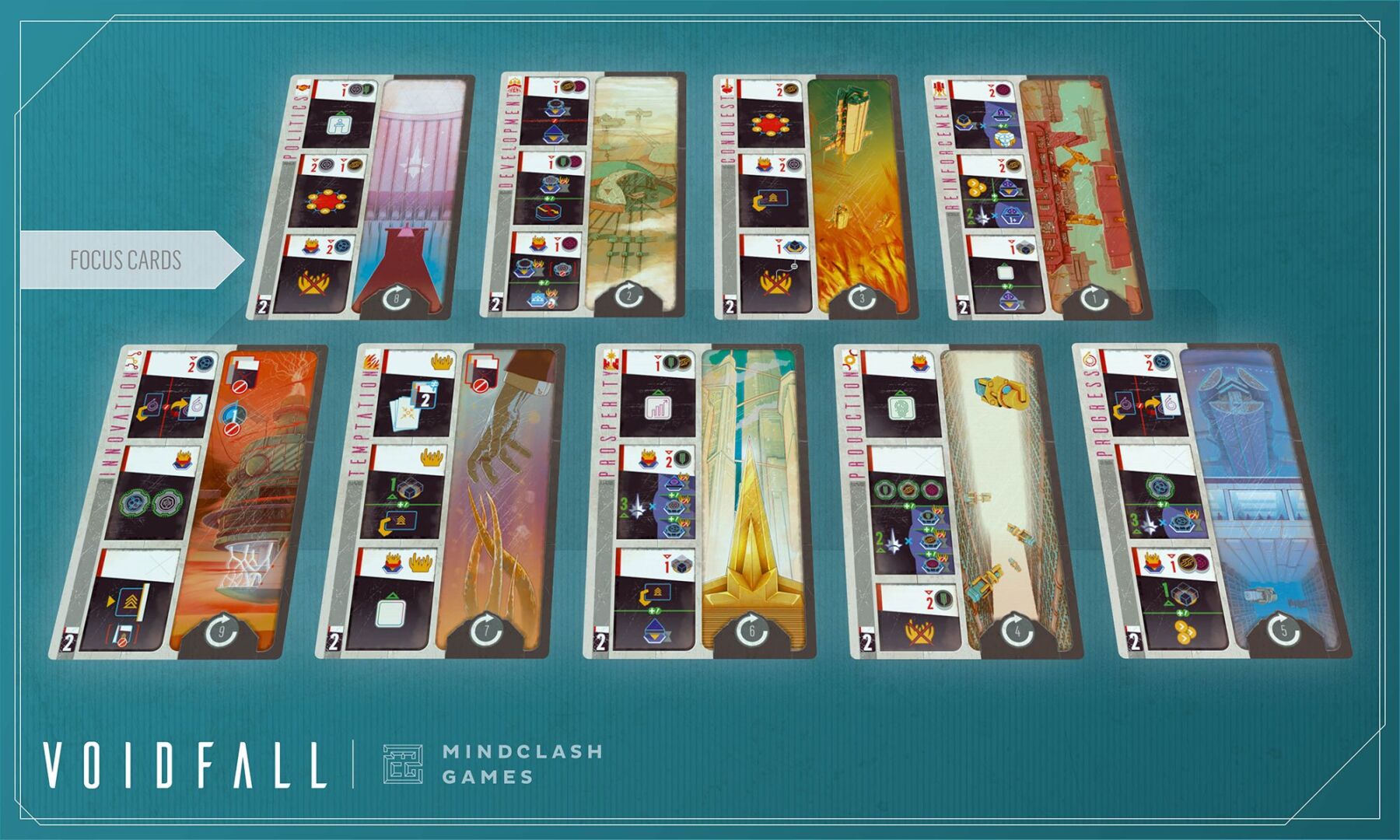
On your turn you will select one of your available Focus cards and play it face up in front of you. Each card has three actions, and when playing it you can pick any two different of the three, but you can select the order that is the most beneficial to you. We designed these Focus cards so that both the card and the action choices, the main decision points of the game, remain tough and meaningful from beginning to end.
Remember all those resources we produced in the previous Spotlight? Well, most of these Focus Actions have a cost, which you must pay to get the benefit. These costs can be resources out of your stockpile - Food, Materials, Energy, Science, and Credits - as well as other expenditures or penalties (we’ll learn more about those in future entries).
To demonstrate how a Focus card works, let us look at an example up close: meet the Development Focus. This Focus allows you to expand your empire by establishing the Guilds we mentioned last time, building the military Installations you may need, and also increasing your population. Each of these options in one form or another allows you to boost your production capabilities.
Like every other Focus card, this has 3 actions for you to choose two from. Construction action allows you to establish a Guild or build an Installation of any type in a sector you control, assuming you have enough space on the sector tile. To choose this action you need to pay 1 material and 1 energy from your stockpile.
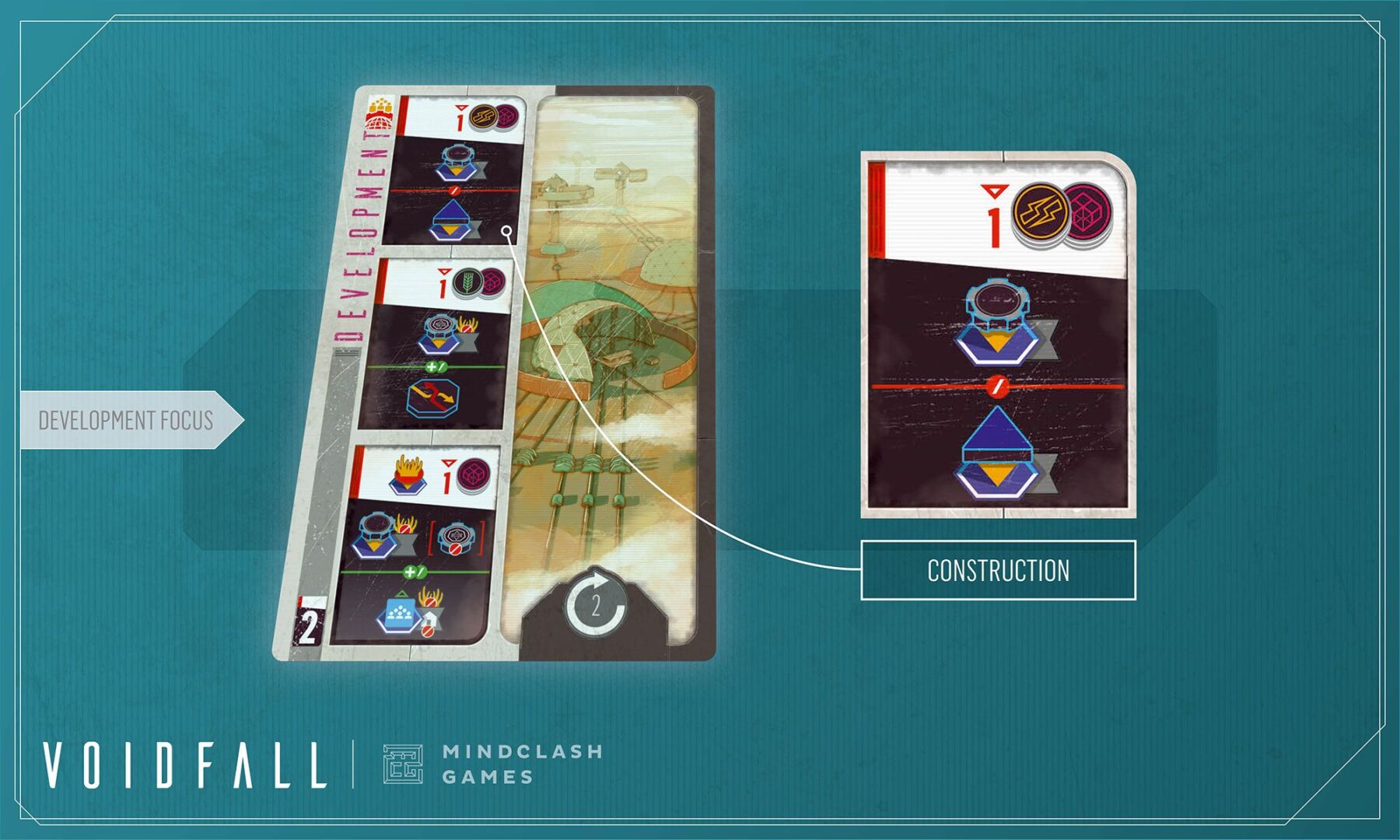
The Subsidized Expansion action costs you 1 material and 1 food, and it’s limited to establishing a particular type of Guild - the Bankers’ Guild. You can only place it on a pure sector, free of the Voidborn’s corruption. However, the added commerce represented by the Bankers’ Guild gains you a hefty bonus: a Trade token. More on that in a second!
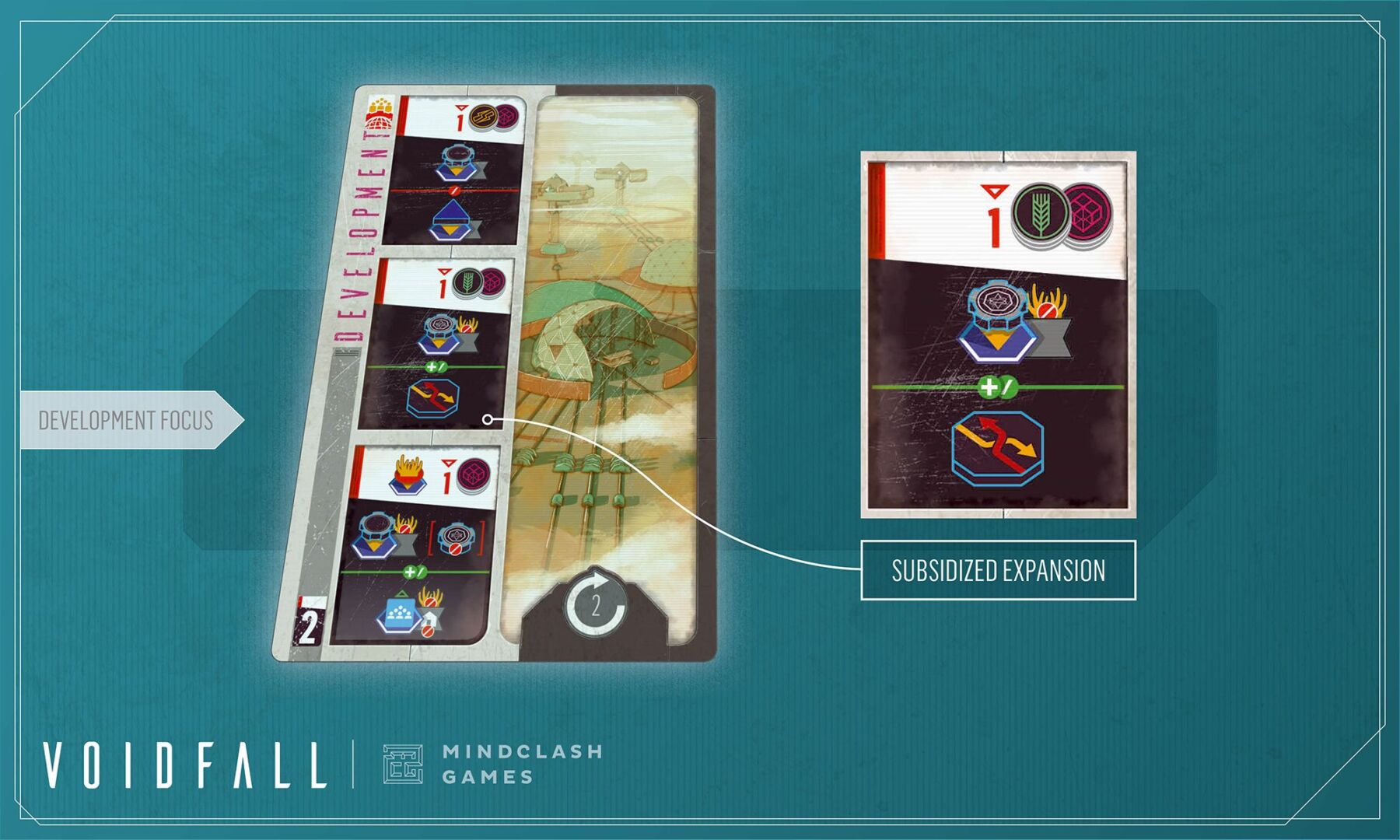
The last action is Industrialized Habitation, which involves increasing the population of one of your sectors (except your Home sector) and also establishing a Guild (this time anything except a Bankers’ Guild) in a sector. You may remember from the last entry how important it is to increase your population to boost the production of your Guilds already present in the sector - instead of having to build more, you just make a handful of them more efficient! However, this action has a scary alternate cost: on top of decreasing your resource stockpile, the Voidborn perceives this action as a direct threat, and reacts with a fleet deployment.
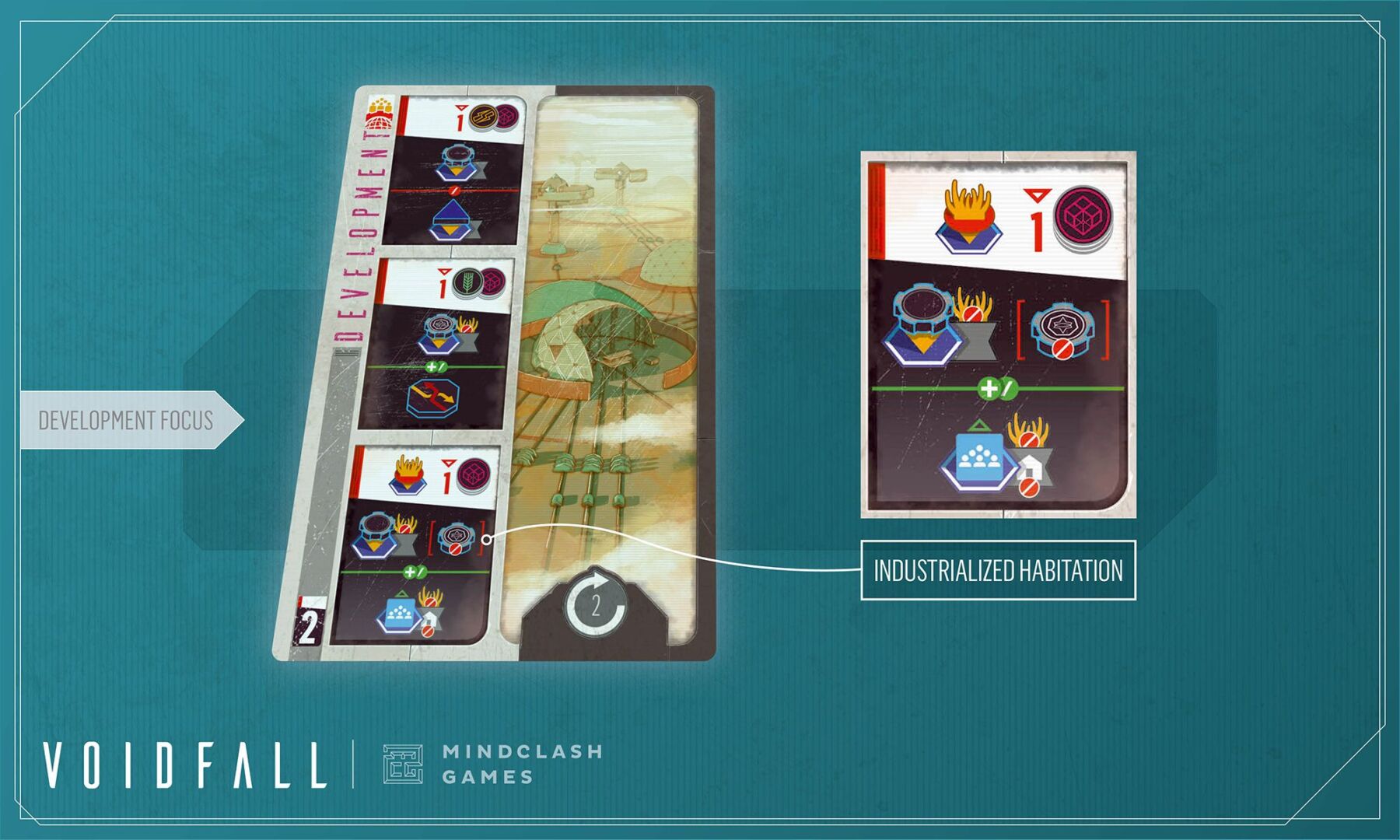
Fleet deployment appears as a cost on several actions, and it is one of the ways for the Voidborn to evolve and remain a formidable adversary over the course of the game, even in the competitive version. Don’t worry, we will cover how this works in more detail in the coming Spotlights!
So let’s get back to those Trade tokens we’ve teased above, and take a look at how galactic commerce is represented in the game!
A few effects in the game allow you to gain a Trade token, each representing the gradually reviving commerce amongst the human sectors free of the Voidborn’s direct control. When you gain a Trade token, you immediately receive a Windfall bonus shown on the Trade market - a boon that increases based on the amount of Trade tokens gained this Cycle by all players. Maintaining a strong Trade infrastructure reduces your upkeep costs (more on that in a later Spotlight), but you may also exert a Trade token as you take an action to cash in your profits or call in a favor from your trade partners.
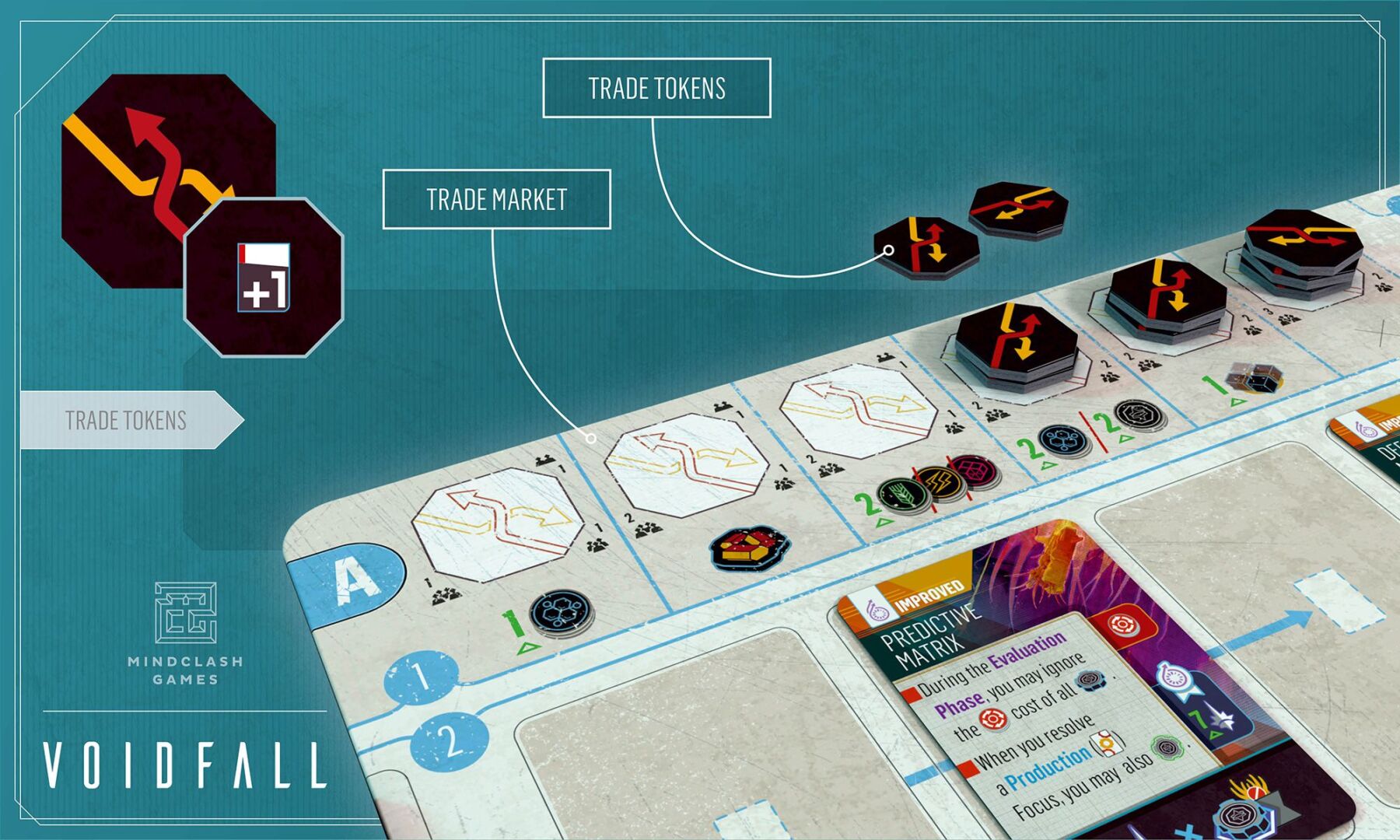
When you do, you gain an additional action allowing you to resolve all three choices of your Focus card! So using the Development Focus as an example, that would let you build up to 3 developments, for example an Installation, a Banker’s Guild, and another Guild of any other type. (Before you ask - yes, you have to have a Trade token to exert when you play your Focus, you cannot spend one you got this turn  )
)
Finally, note that each Focus card has a time unit cost shown on the bottom, representing its organizational and logistic burden. Usually, Focus cards that are more impactful or provide bigger immediate gain tend to have higher time unit cost. In the competitive game, the player with the lowest total sum of time unit cost will be first to pick a Priority card at the end of the Cycle.
The Focus cards are your toolbox of options for improving and expanding your fledgling empire. Some will let you build, some will let you become more threatening, and some more “exotic” ones even let you embrace the Voidborn’s corruption for extremely impactful actions.
Our next spotlight will use one of the more unusual Focus cards, Innovation, to walk you through the Technologies and Agendas of Voidfall, which act as both a decisive combo opportunity and your primary way of scoring.
See you next Wednesday!